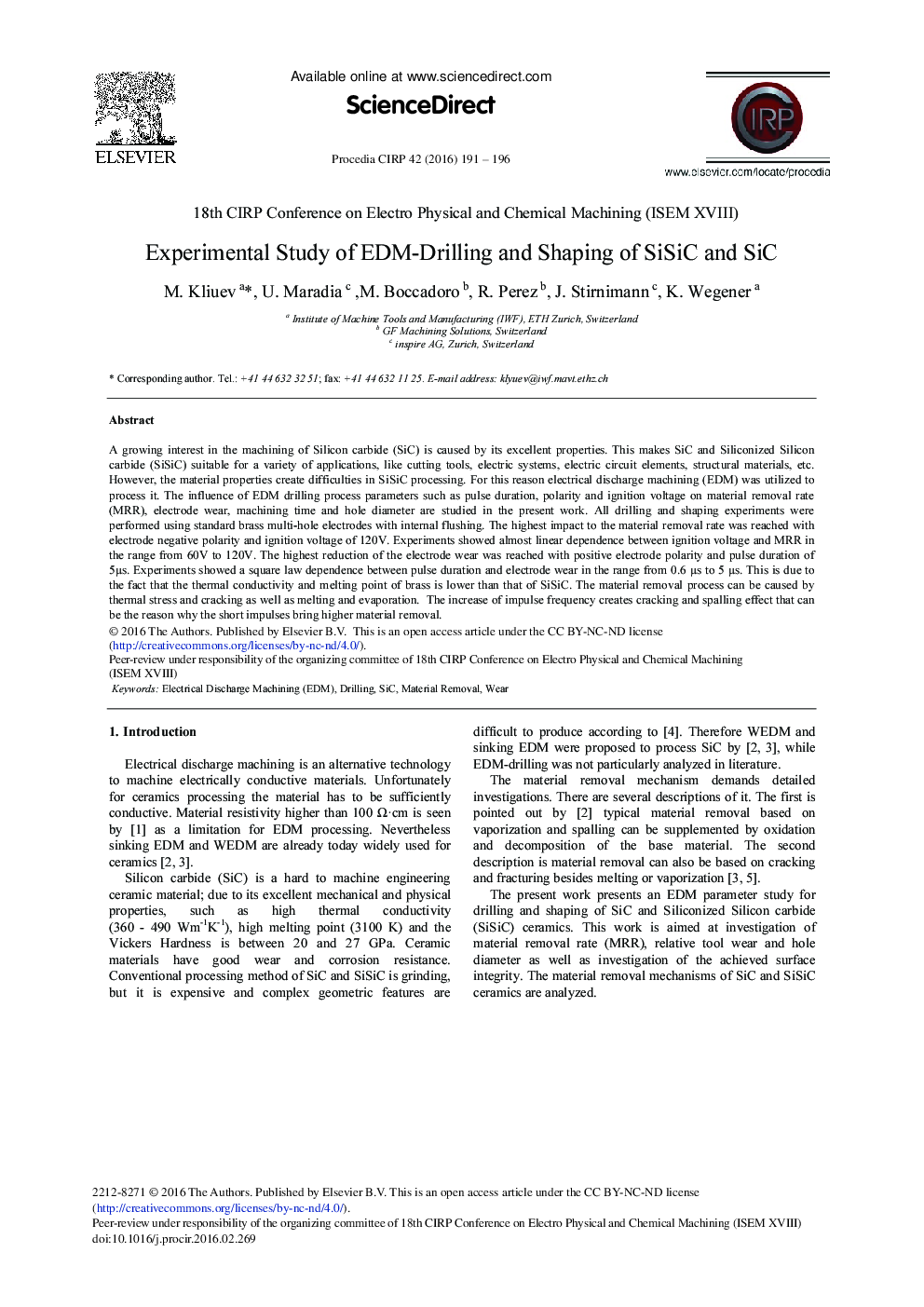| کد مقاله | کد نشریه | سال انتشار | مقاله انگلیسی | نسخه تمام متن |
|---|---|---|---|---|
| 1698936 | 1519310 | 2016 | 6 صفحه PDF | دانلود رایگان |

A growing interest in the machining of Silicon carbide (SiC) is caused by its excellent properties. This makes SiC and Siliconized Silicon carbide (SiSiC) suitable for a variety of applications, like cutting tools, electric systems, electric circuit elements, structural materials, etc. However, the material properties create difficulties in SiSiC processing. For this reason electrical discharge machining (EDM) was utilized to process it. The influence of EDM drilling process parameters such as pulse duration, polarity and ignition voltage on material removal rate (MRR), electrode wear, machining time and hole diameter are studied in the present work. All drilling and shaping experiments were performed using standard brass multi-hole electrodes with internal flushing. The highest impact to the material removal rate was reached with electrode negative polarity and ignition voltage of 120 V. Experiments showed almost linear dependence between ignition voltage and MRR in the range from 60 V to 120 V. The highest reduction of the electrode wear was reached with positive electrode polarity and pulse duration of 5 μs. Experiments showed a square law dependence between pulse duration and electrode wear in the range from 0.6 μs to 5 μs. This is due to the fact that the thermal conductivity and melting point of brass is lower than that of SiSiC. The material removal process can be caused by thermal stress and cracking as well as melting and evaporation. The increase of impulse frequency creates cracking and spalling effect that can be the reason why the short impulses bring higher material removal.
Journal: Procedia CIRP - Volume 42, 2016, Pages 191-196